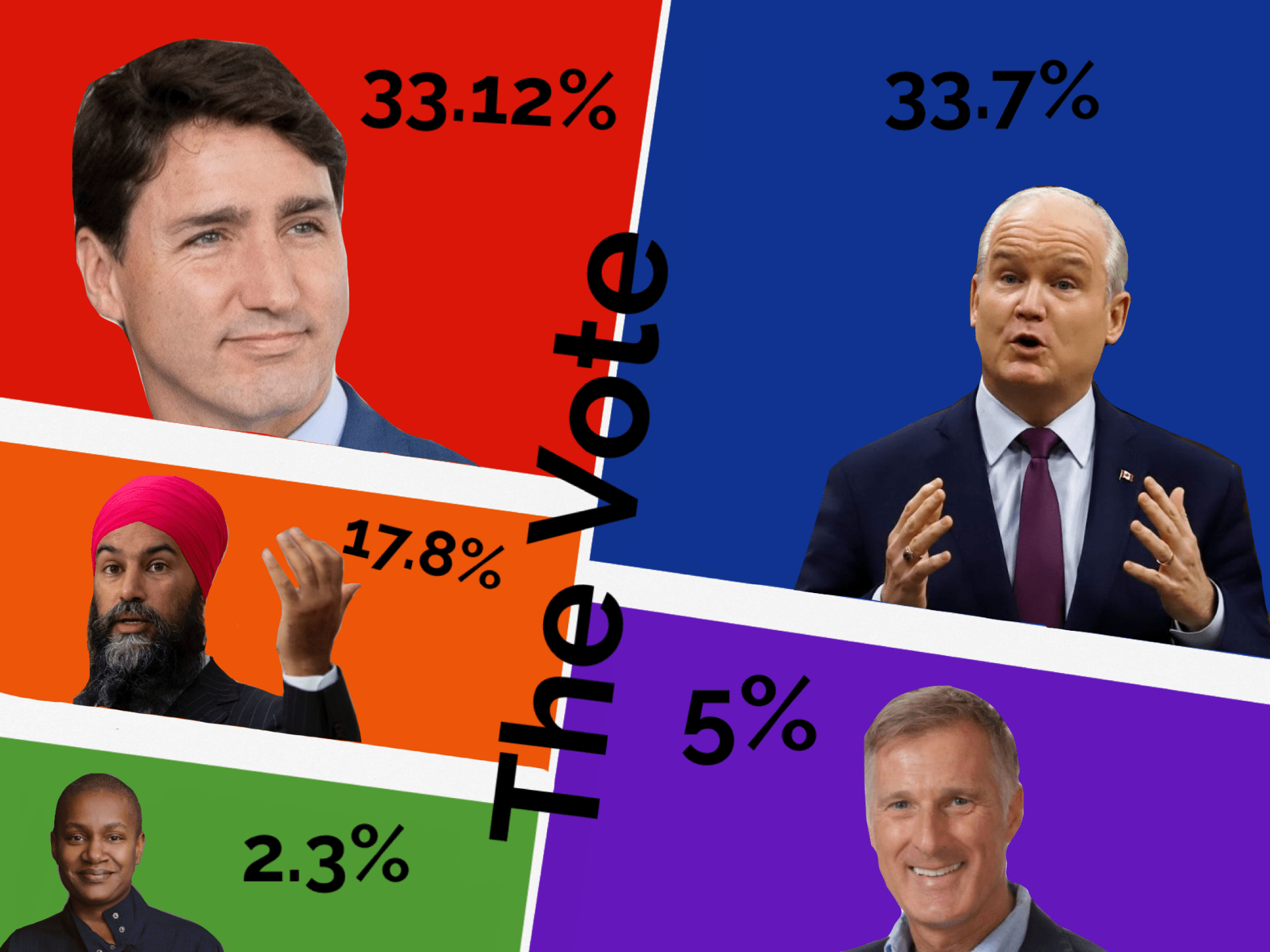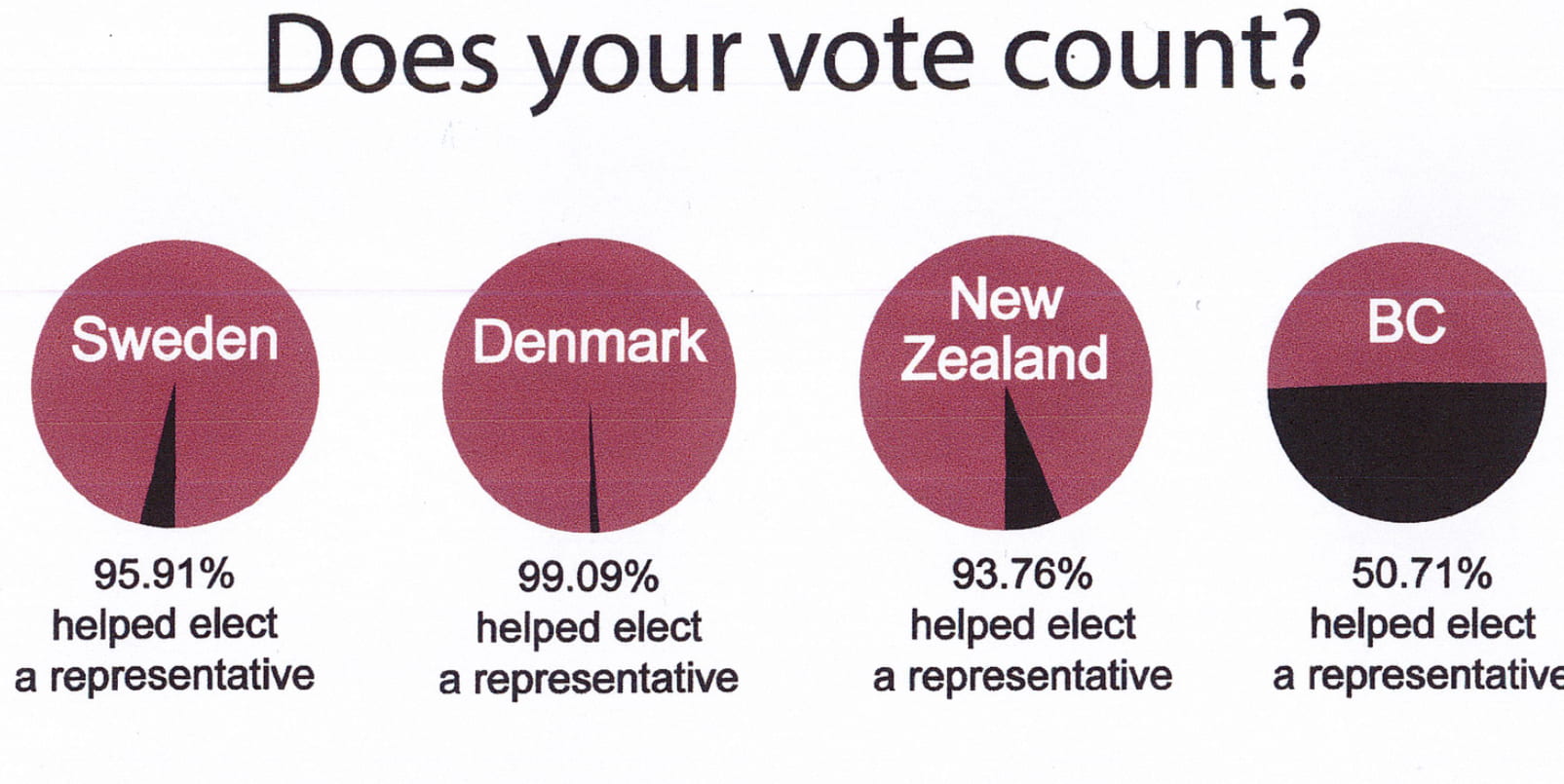With the federal election coming to an end many Canadians are left disappointed with the lack of change from this election. As it was already held early and cost over 600 million dollars (CBC) it was expected to make a difference in our parliament. So why did this election take place and what system in our government may have stopped the change Canadians were hoping to see?
Trudeau was hoping to get a majority government, but ended up with the exact same amount of seats. O’toole wanted to take a conservative minority at the minimum, but also hardly changed his seats. This seems like the worse case scenario for everybody. Although this result may have been just meant to be, one reason both the conservatives and liberals lost votes and seats is because of the rise of other left and right wing party’s in Canada. The NDP or New Democrats took 25 potential seats from the liberal party. The Bloc Québécois, although not exactly similar to the Conservative party, Managed to take 34 seats. It’s possible too, that the growing PPC, that had over 800000 votes (Macleans) also took valuable votes from the conservatives. All these things are called splitting the vote. Wether it’s in one riding where a split vote for the left or the right could mean the difference between winning a seat in that area. Or if it’s splitting the vote in-between to similar party’s on the larger scale. The way Canadians combat this in our first past the post elections is by strategic voting (GlobalNews). This is when you vote for the party that is most likely to have a good chance of winning, rather than the party you most align your views with. By doing this Canadians may stop splitting the vote, but they also stop new party’s from becoming apart of the Canadian government. So it’s seems that the way we run our elections may be making it hard for Canadians to elect the government they really want to see. You might be wondering if there are any solutions. Luckily, in my opinion, their is a better option. Proportional representation.
Proportional representation is designed to allow people to vote for who they want while also making sure their vote isn’t split. There are many different types of proportional representation, but let me tell you about my favourite. Instead of selecting just one candidate like in our current system, Canadians would number the party’s from best to worst. The first vote count would happen and everyone’s first votes would count towards the tally. The party with the least amount would be removed from the count. Then those peoples second votes would be added to the tally. The process would repeat until there was only one person or party left. This way of voting would hopefully mean that Canadians would elect someone they were all somewhat happy with. This is also a very simplified version, but if you click on the video below you can learn more about this in detail.
The benefits for Canadians that I see would be allowing them to vote for who they truly want to see in government and not fear “wasting their votes”. Of course there could be some downsides. It could mean that almost nobody ever got who they wanted the most in the government and it could also increase complication in voting which may stop even more people from going to vote.

This graphic helps show clearly the left and right sides of the election and where the vote is being split.
Some countries have already started to use proportional representation. Germany uses proportional representation for its federal elections, along with over 40 countries in Europe and Asia. This system seems to be working well for most of them. Germany has had it since 2005, and their economy (Reuters), overall happiness of their citizens (IamExPat) and their climate control have all been on the rise.
Overall I am by no means saying that Proportional representation is the best solution for Canadians. But I think it is worth researching and considering to help combat some of the problems in our current electoral process.




Leave a Reply